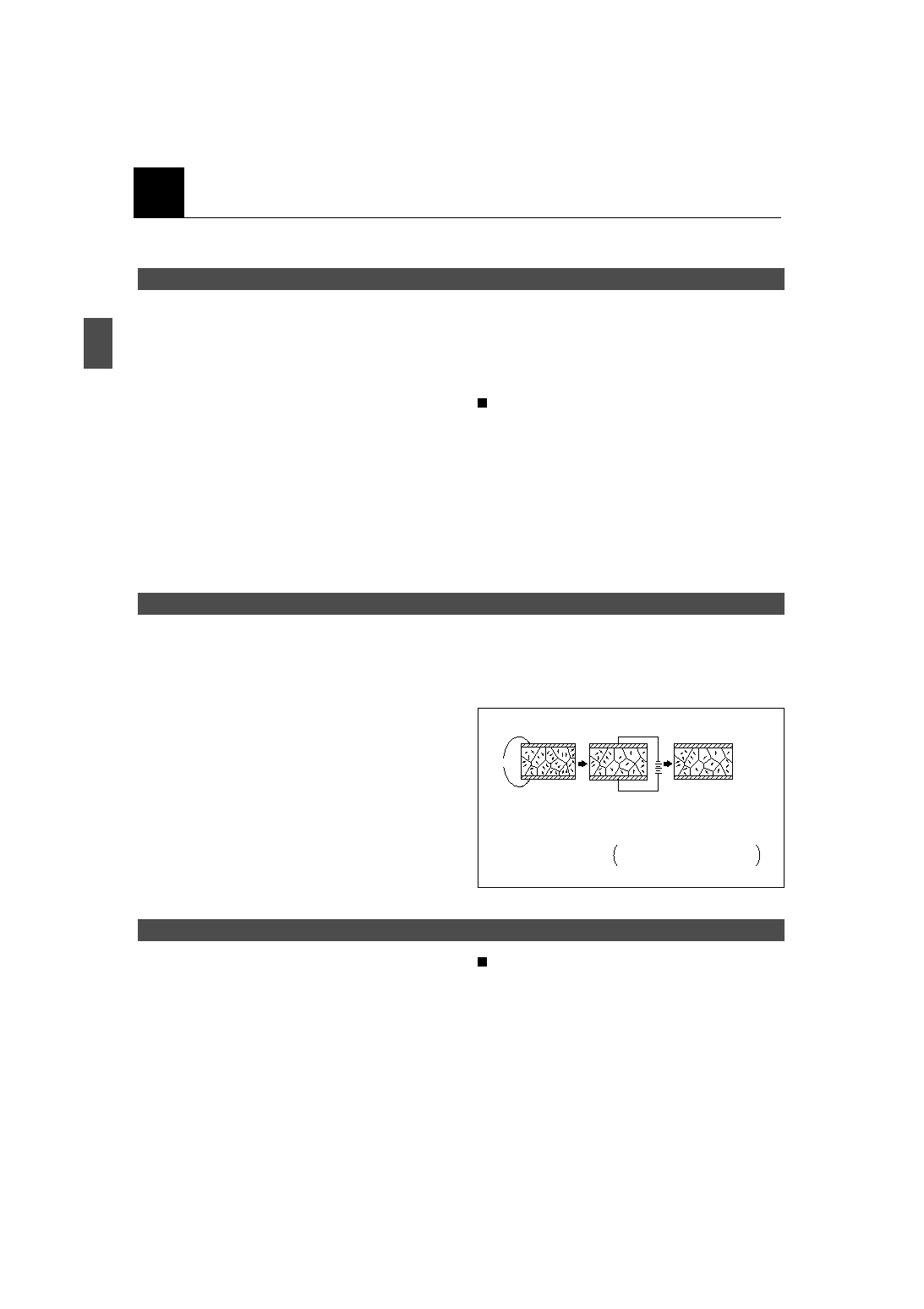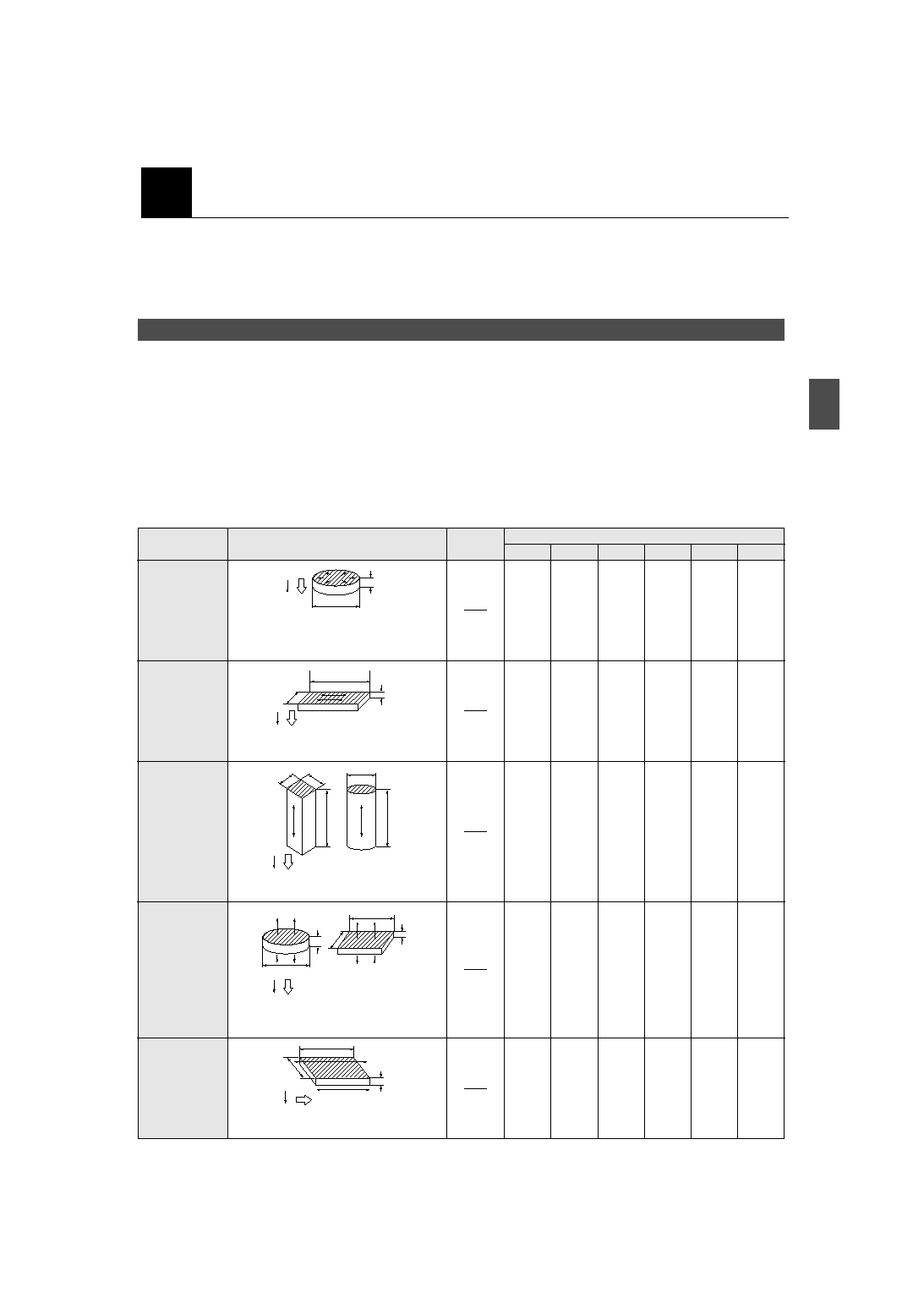Document Outline
- ˛ˇ
- ˛ˇ
- ˛ˇ
- ˛ˇ
- ˛ˇ
- ˛ˇ
- ˛ˇ
- ˛ˇ
- ˛ˇ
- ˛ˇ
- ˛ˇ
- ˛ˇ
- ˛ˇ
- ˛ˇ
- ˛ˇ
- ˛ˇ
- ˛ˇ
- ˛ˇ
- ˛ˇ

Murata
Manufacturing Co., Ltd.
Cat.No.P19E-7
Piezoelectric Ceramic Sensors (PIEZOTITEr)
PIEZOELECTRIC
CERAMICS
SENSORS
(PIEZOTITEr)
Please read rating and
!
CAUTION (for storage and operating, rating, soldering and mounting, handling) in this PDF catalog to prevent smoking and/or burning, etc.
This catalog has only typical specifications. Therefore, you are requested to approve our product specification or to transact the approval sheet for product specificaion before ordering.
!
Note
P19E7.pdf 02.6.26

Please read rating and
!
CAUTION (for storage and operating, rating, soldering and mounting, handling) in this PDF catalog to prevent smoking and/or burning, etc.
This catalog has only typical specifications. Therefore, you are requested to approve our product specification or to transact the approval sheet for product specificaion before ordering.
P19E7.pdf 02.6.26
!
Note
Preface
Recently, with the remarkable advance of electronics
technology, various new products have come into existence.
Until this time, the effect of electronics was seen most
clearly in television, radio and other communications
equipment, but as semiconductor technology, and computer
technology advance, the range of electronics' effect on our
lives has increased dramatically. In particular, sensor
technology and the greater intelligent functions of today's
microcomputers have served as a basis for the trend toward
combining electronics and mechanics into what is called
mechatronics.
It is not merely the equipment itself, however, that has made
all this possible. Within the equipment are highly
sophisticated components with unique functions which can
translate electrical to mechanical energy and mechanical to
electrical energy and which play a large role in today's
equipment modernization and advance. These are
piezoelectric components. This catalog briefly introduces the
basics of piezoelectric ceramics, Murata's piezoelectric
ceramic materials, piezoelectric transducers and other
products.
Please insure the component is thoroughly evaluated in your
application circuit.
In case that the component is not mentioned in our state-
ment, please contact your Murata representative for details.

Please read rating and
!
CAUTION (for storage and operating, rating, soldering and mounting, handling) in this PDF catalog to prevent smoking and/or burning, etc.
This catalog has only typical specifications. Therefore, you are requested to approve our product specification or to transact the approval sheet for product specificaion before ordering.
P19E7.pdf 02.6.26
!
Note
Preface
Introduction
----------------------------------------------------------------------------------------
0
2
Characteristics of Piezoelectric Ceramics (PIEZOTITE
r
)
------
0
3
1. Resonant Frequency and Vibration Mode
.................................
0
3
2. Piezoelectric Material Constant Symbols
..................................
0
6
0
1 Frequency Constant N
........................................................
0
6
0
2 Piezoelectric Constants d and g
.............................................
0
6
0
3 Electromechanical Coupling Coefficient k
..................................
0
6
0
4 Mechanical Qm
.................................................................
0
6
0
5 Young's Modulus Y
E
...........................................................
0
7
0
6 Poisson's Ratio
E
..............................................................
0
7
0
7 Density
.........................................................................
0
7
0
8 Relative Dielectric Constant
.............................................
0
7
0
9 Curie Temperature Tc
.........................................................
0
7
10 Coercive Field Ec
..............................................................
0
7
Murata's Piezoelectric Ceramics (PIEZOTITE
r
) Material
------
0
8
1. Characteristics of Typical Materials
........................................
0
8
2. Features of PIEZOTITE
r
Materials
..........................................
0
9
3. Temperature Characteristics and Aging
...................................
0
9
Murata's Piezoelectric Ceramic Resonators (PIEZOTITE
r
)
--------
10
1. Shapes
............................................................................
10
2. Standard Specification Models
.............................................
10
3. Notice
.............................................................................
11
Piezoelectric Ceramic (PIEZOTITE
r
) Applications
----
12
Piezoelectric Actuator
............................................................
13
Molded Underwater Transducer
...............................................
17
Ultrasonic Sensor
.................................................................
18
Shock Sensor
......................................................................
26
Knocking Sensor Elements
.....................................................
37
Ultrasonic Bubble Sensor
.......................................................
38
Electric Potential Sensor
........................................................
39
1
2
3
4
5
T
O
Introduction
1
Characteristics of Piezoelectric
Ceramics (PIEZOTITEr)
2
Murata's Piezoelectric Ceramics
(PIEZOTITEr) Material
3
CONTENTS
Murata's Piezoelectric Ceramics
Resonators (PIEZOTITEr)
4
Piezoelectric Ceramic
(PIEZOTITEr) Applications
5
PIEZOTITEr,CERAFILr and CERALOCKr in this catalog are the
trademark of Murata Manufacturing Co., Ltd.

2
Please read rating and
!
CAUTION (for storage and operating, rating, soldering and mounting, handling) in this PDF catalog to prevent smoking and/or burning, etc.
This catalog has only typical specifications. Therefore, you are requested to approve our product specification or to transact the approval sheet for product specificaion before ordering.
P19E7.pdf 02.6.26
!
Note
1. What are Piezoelectric Ceramics?
2. Properties of Piezoelectric Ceramics
3. Application of Piezoelectric Ceramics
Piezoelectric ceramics are known for what are called the
piezoelectric and reverse piezoelectric effects. The piezo-
electric effect causes a crystal to produce an electrical
potential when it is subjected to mechanical vibration. In
contrast, the reverse piezoelectric effect causes the
crystal to produce vibration when it is placed in an
electric field. Of piezoelectric materials, Rochelle salt
and quartz have long been known as single-crystal
piezoelectric substances. However, these substances
have had a relatively limited application range chiefly
because of the poor crystal stability of Rochelle salt and
the limited degree of freedom in the characteristics of
quartz. Later, barium titanate(BaTiO
3
), a piezoelectric
ceramic, was introduced for applications in ultrasonic
transducers, mainly for fish finders. More recently, a
lead titanate, lead zirconate system(PbTiO
3
PbZrO
3
)
appeared, which has electromechanical transformation
efficiency and stability(including temperature
Piezoelectric ceramics are a type of multi-crystal
dielectric with a high dielectric constant and are formed
by two processes : first, high temperature firing. After
firing, they have the characteristic crystal structure
shown in Fig. 1 (a) but do not yet exhibit the
piezoelectric property because the electrical dipoles
within the crystals are oriented at random and the overall
moment of the dipoles is canceled out. To make ceramics
piezoelectric they must be polarized. A DC electric field
of several kV/mm is applied to the piece of ceramic to
align the internal electrical dipoles in a single orientation
(see Fig. 1 (b)). Due to the strong dielectric property of
the ceramic, the dipole moment remains unchanged after
the electric field is removed, and the ceramic thus
exhibits a strong piezoelectric property (see Fig. 1 (c)).
When an AC signal is applied to a piezoelectric ceramic
(piezoelectric transducer) in a frequency matching the
specific elastic frequency of the ceramics (which depends
on the shape of the material), the ceramic exhibits
resonance. Since the ceramic has a very high
electromechanical transforming efficiency at the point of
resonance, many applications use this resonance point.
Also piezoelectric ceramics when molded in certain
shapes have more than one point of resonance depending
on vibration mode. In such a case, the vibration mode
most suited for the application is selected.
characteristics)far superior to existing substances. It has
dramatically broadened the application range of
piezoelectric ceramics. When compared which other
piezoelectric substances, both BaTiO
3
and PbTiO
3
PbZrO
3
have the following advantages:
Advantages
q
High electromechanical transformation efficiency.
w
High machinability.
e
A broad range of characteristics can be achieved with
different material compositions (high degree of freedom
in characteristics design).
r
High stability.
t
Suitable for mass production, and economical.
Murata, as a forerunner in the piezoelectric ceramic
industry, offers an extensive range of products with
piezoelectric applications.
Product applications for piezoelectric ceramics include
the following categories :
Murata has and is continuing to direct extensive research
development efforts to the entire range of applications of
piezoelectric ceramics listed in the right side. It is
expected that the applications of piezoelectric ceramics
will continue to extend into a broader range of industries
as new piezoelectric materials are created.
This application manual concentrates on applications with
mechanical power sources and sensors which are now
finding broader applications.
Piezoelectric Applications
q
Mechanical power sources (electrical-to-mechanical
transducers) :
Piezoelectric actuators, piezoelectric fans, ultrasonic
cleaners, etc.
w
Sensors (mechanical-to-electrical transducers) :
Ultrasonic sensors, knocking sensors, shock sensors,
acceleration sensors, etc.
e
Electronic circuit components (transducers) :
Ceramic filters, ceramic resonators, surface acoustic
wave filters, microforks, etc.
(a)
(b)
(c)
Electrodes
After firing
Polarization processing
in strong DC field
(Several kV/mm)
Overall, the polarization
axes are oriented upward.
Residual Polarization
The direction of polarization remains the
same after the electric field is cut off.
Fig. 1 Polarization Processing of Piezoelectric Ceramics
Introduction
1
1

3
Please read rating and
!
CAUTION (for storage and operating, rating, soldering and mounting, handling) in this PDF catalog to prevent smoking and/or burning, etc.
This catalog has only typical specifications. Therefore, you are requested to approve our product specification or to transact the approval sheet for product specificaion before ordering.
P19E7.pdf 02.6.26
!
Note
1. Resonant Frequency and Vibration Mode
For using piezoelectric ceramics, it is important to first
have an adequate knowledge of the properties of different
piezoelectric materials before choosing a suitable type for
a specific application. The following sections describe the
major characteristic which need to be evaluated to
determine the properties of piezoelectric ceramic materials.
If an AC voltage of varying frequency is applied to a piezo-
electric ceramic (piezoelectric transducer) of a certain
shape, it can be seen that there is a specific frequency at
which the ceramic produces a very strong vibration. This
frequency is called the resonant frequency, fr, and
depends on the ceramic's specific elastic vibration
(resonance) frequency, which is a function of the shape
of the material.
Piezoelectric ceramics have various vibration modes
(resonant modes) which depend on their shape,
orientation of polarization, and the direction of the
electric field. Each of these vibration modes have unique
resonant frequencies and piezoelectric characteristics.
Fig. 2 shows typical vibration modes in relation to the
shapes of ceramic materials, the resonant frequency in
each vibration mode, and the material constant symbols.
In Fig. 2, the piezoelectric material constant symbols
have the following meanings:
N :Frequency Constant (described in Section 1).
d :Piezoelectric Distortion Constant (described in Section 2).
g :Voltage Output Constant (described in Section 2).
k :Electromechanical Coupling Coefficient (described in Section 3).
Y
E
:Young's Modulus (described in Section 5).
T
:Dielectric Constant (described in Section 8).
Vibration Mode
Shape/Vibration Mode
Radial Mode
Length Mode
Longitudinal
Mode
Thickness Mode
Shear Mode
d
t
P
E
P : Direction of polarization
E : Direction of electric field
d >15t
Resonant
Frequency
(fr)
Material Constant Symbol
k
d
g
Y
E
T
N
Thin disk with radial vibration mode. Polarization is
oriented along the thickness of the disk.
t
P
E
R
> 4a
R
a > 3t
a
Thin rectangular plate, with the direction of vibration orthogonal
to the polarization axis and with a single point of resonance.
P
E
R
> 2.5a,2.5b,2.5d
a
b
R
R
d
Square and cylindrical columns. Vibration is oriented along the
direction of polarization. Only a single point of resonance.
d
P
E
t
t
R
a
10t
V
a,
R
,d
Disk and rectangular plates which are thin com-
pared to their surface areas. They have multiple
points of resonance in longitudinal vibration mode.
t
P
E
R
> a > t
R
a
Disk or rectangular plates, with the electric field orthogonal to the
direction of polarization, causing a shear vibration along the surface.
Fig. 2 Typical Vibration Modes, Resonant Frequencies, and Material Constant Symbols of Piezoelectric Ceramics
kp
Np
d
d
31
g
31
Y
11
E
33
T
Np
k
31
k
33
k
t
k
15
d
15
g
15
Y
44
E
11
T
N
15
d
33
g
33
Y
33
E
33
T
Nt
d
33
g
33
Y
33
E
33
T
N
33
d
31
g
31
Y
11
E
33
T
N
31
N
31
R
N
33
R
Nt
t
N
15
t
2
Characteristics of Piezoelectric Ceramics (PIEZOTITEr)
2




